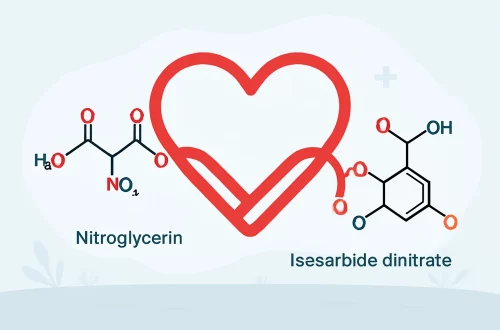
The Science Behind Attraction: I Like Your Pheromones
Attraction is a captivating phenomenon that has intrigued humans for centuries, transcending mere physical appearances. While cultural and social factors certainly play a significant role in this complex interplay of feelings, there is a fascinating biological component that often goes unnoticed: pheromones. These chemical signals, secreted by our bodies, can evoke powerful emotional and physical responses in others, influencing attraction in ways that we may not fully understand.
The science of attraction is a blend of psychology, biology, and chemistry, all working in harmony to connect individuals. It’s a dance of hormones and neurotransmitters that can ignite passion or foster a sense of comfort and safety. As we navigate our interactions, it’s essential to recognize that attraction is not solely based on conscious choices or societal norms. Instead, it is often rooted in instinctual responses to the biochemical signals that we emit and receive from one another.
In exploring the science behind attraction, we delve into the intricate world of pheromones and their impact on human relationships. What are these elusive chemicals, and how do they shape our interactions? Understanding this process can provide deeper insights into our connections with others, revealing the profound ways in which our bodies communicate.
The Role of Pheromones in Human Interaction
Pheromones are chemical substances produced and released into the environment by an individual, which can trigger social responses in members of the same species. In humans, these chemicals are thought to play a crucial role in interpersonal attraction, although the exact mechanisms are still being studied.
The human body releases pheromones through sweat, saliva, and other bodily fluids. These compounds are detected by the vomeronasal organ (VNO), a small structure located in the nasal cavity. While the VNO’s functionality in humans is debated, the implications of pheromones on attraction are noteworthy. Studies have shown that pheromonal signals can influence a range of behaviors, from sexual arousal to mate selection.
One of the most compelling aspects of pheromones is their ability to act subconsciously. Individuals may find themselves inexplicably drawn to someone without understanding why. This attraction could be linked to the pheromonal cues that signal compatibility, health, or genetic diversity. For instance, research suggests that women may prefer the scent of men whose immune system genes differ from their own, potentially leading to offspring with a stronger immune response.
Moreover, pheromones can also play a role in emotional bonding. The scent of a loved one can evoke feelings of comfort and familiarity, creating a strong emotional connection. This phenomenon is particularly evident in relationships, where partners often become attuned to each other’s unique scents, reinforcing their bond.
In summary, while attraction may seem like a straightforward emotional response, it is deeply rooted in biological processes. The role of pheromones in human interaction illustrates the intricate ways in which our bodies communicate, influencing our relationships on a subconscious level.
The Science of Attraction: Beyond Pheromones
While pheromones are a crucial aspect of attraction, they are not the only factors at play. The science of attraction encompasses a broader spectrum of biological, psychological, and social elements that contribute to the complex tapestry of human relationships.
One significant factor in attraction is physical appearance. Humans are naturally drawn to certain physical traits, which can vary significantly across cultures and personal preferences. Features such as facial symmetry, body language, and grooming can all influence initial attraction. These preferences are often rooted in evolutionary biology, where certain traits may indicate health and genetic fitness.
Another essential element is the role of psychological factors. Personal experiences, emotional states, and individual personalities can significantly affect attraction. For example, someone who exudes confidence or has a warm, engaging personality may be more attractive to others, regardless of their physical traits. Additionally, shared interests and values can create a deeper connection, fostering attraction beyond mere physical appearance.
Social context also plays a vital role. The environment in which people meet can influence their perceptions of one another. For instance, a romantic setting can elevate attraction levels, while high-stress situations might inhibit feelings of connection. Furthermore, societal norms and cultural backgrounds can shape what individuals find attractive, creating a unique tapestry of preferences across different communities.
In essence, while pheromones provide a biological basis for attraction, they exist within a larger framework of physical, psychological, and social factors. Understanding this complexity can enhance our appreciation of human relationships and the myriad ways in which we connect with one another.
The Impact of Emotional States on Attraction
Emotional states are another pivotal factor in attraction, often acting as a catalyst for connection. The interplay between emotions and attraction is a dynamic process that can significantly influence how individuals perceive one another.
When someone is in a positive emotional state, they are more likely to exude warmth and openness, making them more attractive to others. This phenomenon is linked to the concept of “emotional contagion,” where the positive emotions of one person can evoke similar feelings in another. For instance, when two individuals share laughter or joy, the bond between them strengthens, enhancing attraction.
Conversely, negative emotions can create barriers to attraction. Feelings of stress, anxiety, or sadness can hinder openness and warmth, making it difficult for individuals to connect. In some cases, emotional baggage can cloud perceptions, leading to misinterpretations of intentions or behaviors. For instance, someone who is feeling insecure may misread friendly gestures as romantic advances, complicating relationships.
Moreover, emotional vulnerability can also play a role in attraction. When individuals share personal stories or experiences, they often create a deeper emotional connection, which can enhance feelings of attraction. This vulnerability fosters trust and intimacy, allowing individuals to feel seen and understood by one another.
In summary, emotional states significantly impact the dynamics of attraction. The interplay between positivity and vulnerability can enhance connections, while negativity can create barriers. Recognizing the influence of emotions can lead to more profound and meaningful relationships.
Conclusion: The Complexity of Attraction
Attraction is a multifaceted phenomenon shaped by an intricate interplay of biological, psychological, and social factors. While pheromones provide a fascinating insight into the chemical basis of attraction, they are only one piece of a larger puzzle. The role of physical appearance, psychological factors, social context, and emotional states all contribute to how we connect with others.
Understanding the science of attraction allows us to appreciate the complexity of human relationships. It reveals that attraction is not merely a superficial reaction but a rich tapestry woven from various influences. As we navigate our interactions, recognizing these dynamics can enhance our connections and foster deeper relationships.
In conclusion, the science behind attraction underscores the profound ways in which our bodies and minds communicate. By exploring this intricate landscape, we can gain insights into our connections with others, leading to more meaningful and fulfilling relationships.
*Disclaimer: The information provided in this article is for informational purposes only and should not be considered medical advice. Always consult a healthcare professional for any health-related concerns or questions.*




